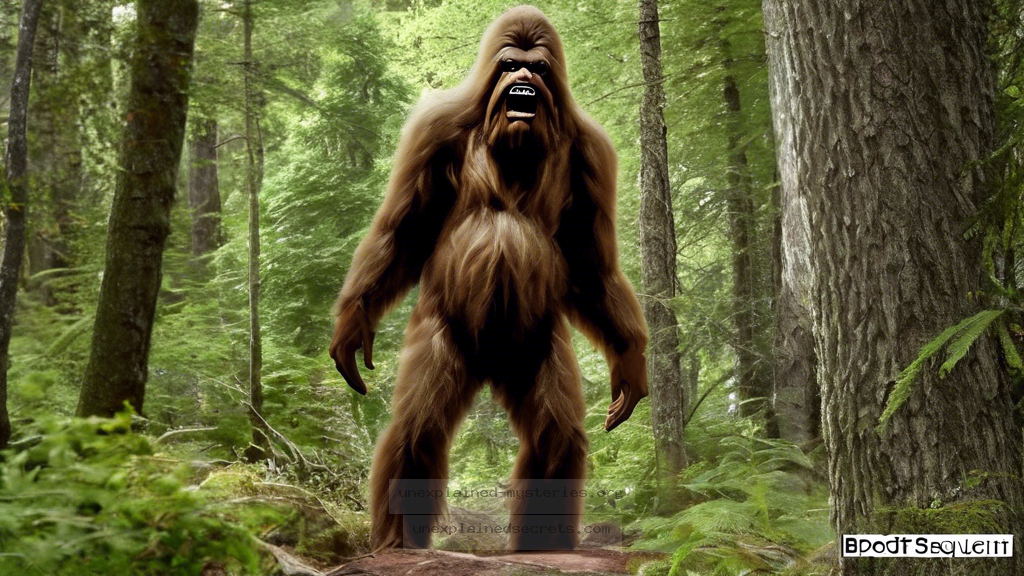What Compelling Evidence Exists to Support the Existence of Bigfoot?
What Compelling Evidence Exists to Support the Existence of Bigfoot?
Bigfoot, or Sasquatch, has been a subject of fascination and debate for decades. This elusive creature has captured the imagination of cryptozoologists, researchers, and the general public alike. But what compelling evidence exists to support the existence of Bigfoot? Understanding this question is vital, as it not only delves into cryptozoology but also reflects human curiosity about the unknown. In this post, we will explore various pieces of evidence, historical accounts, and ongoing research surrounding Bigfoot, attempting to separate fact from fiction.
Historical Context of Bigfoot Sightings
The legend of Bigfoot dates back centuries, with Native American tribes across North America sharing stories of large, hairy humanoid creatures. These tales often described beings that were not only elusive but also revered as guardians of the forest. For instance, the Salish people of the Pacific Northwest referred to Bigfoot as “Sasquatch,” which translates to “wild man.” Such historical context is crucial as it provides a cultural foundation for the mythos surrounding this creature.
In the 19th century, sightings began to gain more attention from settlers and explorers. One notable account is from the 1850s, when gold miners in California reported encountering a giant, hairy creature in the woods. These early sightings laid the groundwork for modern interest in Bigfoot, leading to more extensive investigations and reports in the 20th century. The infamous Patterson-Gimlin film of 1967 remains one of the most discussed pieces of evidence, capturing what many claim to be a female Bigfoot walking through the woods.
Analyzing the Patterson-Gimlin Film
The Patterson-Gimlin film is a 59-second video that has become iconic in the study of Bigfoot. Filmed in Bluff Creek, California, it presents a bipedal creature that many believe to be a Sasquatch. A detailed analysis of this footage reveals several aspects that contribute to its authenticity:
- Physical Characteristics: The creature’s gait and proportions suggest a large, muscular being, which aligns with descriptions provided by witnesses.
- Movement: The fluid motion of the creature, including how it turns its head and arms, has been scrutinized by experts, many of whom argue it would be difficult to replicate with a costume.
- Expert Opinions: Various primatologists and film analysis experts have weighed in on the film, with some asserting it’s the most compelling evidence available.
Footprints: The Physical Evidence
Footprints attributed to Bigfoot have been discovered across North America, with many being cast and analyzed. One of the most famous sites is the 1970s Bluff Creek area, where casts of large, human-like footprints were made. These footprints often measure over 15 inches in length, which is significantly larger than those of an average human.
Analysis of these footprints reveals several intriguing features:
- Toe Structure: Many casts show distinct toe impressions that differ from human feet, suggesting a unique species.
- Depth and Width: The size and depth of the prints indicate a heavy creature, adding weight to the argument that something extraordinary exists.
- Geographic Distribution: Reports of similar footprints have come from various regions, suggesting a widespread presence.
Audio Evidence: Sounds of the Unknown
Audio recordings of alleged Bigfoot vocalizations have become another vital component of the evidence. These recordings, characterized by howls, whoops, and other vocalizations, are often captured in remote areas. One notable example includes the recordings made by Ron Morehead in the Sierra Nevada mountains, which have been analyzed for their unique acoustic qualities.
Researchers have noted several aspects of these sounds:
- Frequency and Range: The vocalizations often exceed the range of human capabilities, suggesting a different species.
- Pattern Recognition: The sounds exhibit patterns that indicate intentional communication, similar to how primates communicate.
Hair Samples and Biological Evidence
In the quest to prove Bigfoot’s existence, researchers have also collected hair samples purportedly from the creature. Notable studies have included the analysis of hair strands that were found in remote areas. In 2012, a study published in the journal “Proceedings of the Royal Society B” analyzed hair samples and concluded that many were from known animals, while some remained unidentified.
Key considerations regarding hair samples include:
- DNA Analysis: Advanced genetic testing has revealed interesting results, with some hair samples pointing to unknown species or hybrids.
- Contamination Issues: The challenge of ensuring samples are free from contamination complicates the analysis, leading to skepticism about results.
Alternative Perspectives: Skeptics and Debunkers
As compelling as the evidence may be, skeptics argue that many claims surrounding Bigfoot can be attributed to misidentification, hoaxes, or folklore. Critics often point to the lack of reproducible physical evidence, such as a body, as a major flaw in the argument for Bigfoot’s existence. For instance, the absence of a confirmed specimen leads many scientists to dismiss the creature as a myth or cultural artifact rather than a living entity.
Additionally, the phenomenon of pareidolia, where people see patterns in random stimuli, can explain many reported sightings. This psychological tendency can make ordinary animals appear as large, hairy creatures in low visibility or dense forest environments.
Common Misconceptions About Bigfoot
Several misconceptions surround Bigfoot, contributing to the ongoing debate about its existence. Here are a few clarifications:
- Bigfoot as a Hoax: While many sightings have been proven to be hoaxes, this does not invalidate all evidence. Genuine reports still exist.
- Bigfoot is Just a Myth: The cultural significance and historical accounts suggest that the idea of Bigfoot is rooted in human storytelling, which may indicate a basis in reality.
- Only One Bigfoot: Many believe there could be multiple undiscovered hominids, rather than just one elusive creature.
Best Practices for Investigating Bigfoot
For those interested in investigating Bigfoot, it’s essential to approach the topic systematically and ethically. Here are some best practices:
- Document Everything: Keep detailed notes and recordings of sightings, sounds, and any other evidence collected.
- Work with Experts: Collaborate with biologists, anthropologists, and experienced investigators to analyze findings critically.
- Respect Wildlife: Always prioritize the well-being of local ecosystems and wildlife during investigations.
- Stay Skeptical: Maintain a critical mindset to differentiate between credible evidence and anecdotal claims.
Future Developments and Ongoing Research
The quest to uncover the truth behind Bigfoot is far from over. With advancements in technology, researchers are employing new methods to analyze evidence. For example, the use of environmental DNA (eDNA) is gaining traction, allowing scientists to detect traces of unknown species in soil and water samples. This could potentially lead to the discovery of evidence supporting the existence of Bigfoot.
Additionally, the rise of citizen science projects encourages enthusiasts to contribute to data collection and research efforts. Collaboration between amateur investigators and professionals could yield new insights and perhaps even definitive proof of Bigfoot’s existence.
Conclusion
The question of whether Bigfoot exists continues to be a compelling mystery. Through historical context, various forms of evidence, and ongoing research, we gain a deeper understanding of this enigmatic creature. While skeptics raise valid points about the need for concrete evidence, genuine accounts and compelling findings still fuel the belief in Bigfoot.
As investigations continue and technologies advance, the possibility of uncovering the truth about Bigfoot remains alive. Whether the creature is a myth or a yet-to-be-discovered species, the fascination with Bigfoot brings together a community of researchers and enthusiasts drawn by the allure of the unknown.
Other Articles
Recent Posts
- What Happened to Flight MH370? The Conspiracy Theories That Still Haunt Us
- What Secrets Lurk Within the Walls of the Infamous Trans-Allegheny Lunatic Asylum?
- What Evidence Supports the Existence of Bigfoot in the Pacific Northwest?
- What Happened to the Indus Valley Civilization? Unraveling the Mysteries of Ancient Urban Life
- Can Telepathy Be Scientifically Proven Through Laboratory Evidence?







